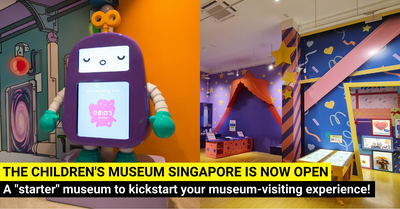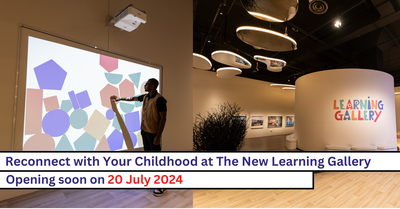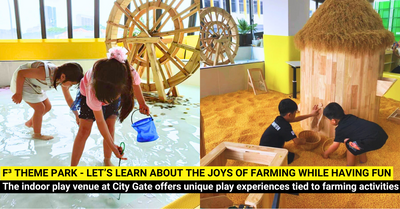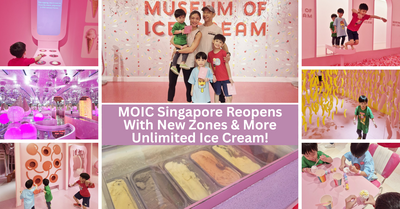Nestled atop a small hill in Bukit Timah is the Former Ford Factory, home to a permanent exhibit, Surviving the Japanese Occupation: War and its Legacies.
Address: Former Ford Factory, 351 Upper Bukit Timah Road, Singapore 588192
Hours: Tue – Sun: 9.00 am – 5.30 pm
Admission: $3/person
Free for Singapore Citizens and PRS
The Former Ford Factory is a historic site where the British forces surrendered to the Imperial Japanese Army in 1942. In 2004, the site was handed over to the National Archives of Singapore (NAS), which opened a permanent exhibition at the site.
After a year-long renewal works in 2016, a new permanent exhibition was opened in 2017, which is the current Surviving the Japanese Occupation: War and its Legacies exhibition.
Fall of Singapore
The exhibition starts with a highlight of the events leading up to the Fall of Singapore when the British forces surrendered to the Japanese on 15 February 1942.


Starting from 1931, the timeline presents fresh perspectives on the fall of Singapore through three intertwining narratives on Japanese aggression, British defences and how civilians in Singapore were caught up in the larger forces of imperial struggle and war.


Lying between this part of the exhibition and the next is the very boardroom of Ford Motor Factory where Lieutenant-General Arthur E. Percival of the British forces surrendered on 15 February 1942. Step into the room and allow the video projection of the events leading up to surrender to take you back in time.

Becoming Syonan-to
Following the British surrender, Singapore was renamed Syonan-to or ‘Light of the South’. The Japanese Occupation was a period of suffering and unfulfilled promises.

In this section, personal items and oral history recollections on display tell the story of diverse wartime experiences and the different ways people responded to these challenges.


You will get to learn about ‘Sook Ching’, an organized killing of suspected anti-Japanese and about Nipponisation, a process which included people having to attend school to learn the Japanese language.

And if you ever thought a bag of eggs are expensive today, wait till you find out how much they cost during the occupation.


Legacies of War
12 September 1945 marked the end of World War II in Singapore with the Japanese officially surrendering to British forces at the Municipal Building of Singapore (now known as City Hall). However, the wartime experience and the British Military Administration’s shortcomings left locals with a less than rosy view of the British.

This part of the exhibit highlights the various challenges of postwar reconstruction. The economy had effectively collapsed, physical infrastructure had suffered and there were shortages in food and essentials.

Through a mix of infographics and old records on display, the exhibit provides us with a look into how life would have been like post-war and the relief steps that were taken by the British Military Administration.

Some of the relief efforts highlighted include setting up subsidy meal restaurants, providing emergency relief fund and setting up temporary hospitals and mobile clinics as a very large part of the population was malnourished due to the world.

One of the immediate legacies of war and occupation was the political awakening of the people and different groups of people believed in different ideologies, such as working with the British on decolonization and communism.
The exhibition ends on a contemplative note on how we remember the war and its enduring legacies.

Due to the ongoing pandemic, the exhibition has closed off all interactive features. Instead, some of the showcases are equipped with a QR code which you can scan and explore through your mobile device.

Former Ford Factory
The Former Ford Factory building traces its origins back to 1941 when the Ford Motor Company of Malaya built it to meet the demands for Ford products. The factory became the first motorcar assembly plant in Southeast Asia.
During World War II, the Japanese Army seized the Ford Factory and made it the Japanese military’s headquarters. During the occupation, the factory was used by Nissan to manufacture military vehicles.

Today, after an extensive revamp, the Former Ford Factory is home to a permanent exhibit, which retells the story of World War II in Singapore, the period of occupation and the aftermath through a collection of artefacts and records.






![50+ Best Indoor Playgrounds in Singapore for Kids and Families! [2025 UPDATED]](http://www.bykido.com/cdn/shop/articles/Copy_of_Copy_of_Facebook_Link_Image_Size_1200_x_628_-_2024-02-22T104754.732_a9e90858-7454-4f42-acaa-d35ea090579f_400x.png?v=1764399101)

![[FREE TRIAL] 60 Mins Coding & Robotics Class Worth $45 (4 - 16 Years Old)](http://www.bykido.com/cdn/shop/files/ByKido_Listing_June2025_Free_Trial_400x.jpg?v=1748841641)
![[FREE TRIAL] Learn AI & Coding with Codingal: FREE 1:1 Coding Trial Class for 6-18 years, worth $30!](http://www.bykido.com/cdn/shop/files/2_d11bd841-f0f1-4e54-b77e-31f754942313_400x.png?v=1752544672)


![[FREE TRIAL] 1 Hour Guided Creative Art Jamming with Tree Art!](http://www.bykido.com/cdn/shop/products/8bc437b0077cecc6f208712e645be97_400x.jpg?v=1658464653)
![[FREE TRIAL] 1hr Online Coding (Scratch or VR Robotics) Trial Class with Skill Samurai](http://www.bykido.com/cdn/shop/products/206779938_170042051838583_5176954401555564140_n_400x.jpg?v=1658464667)